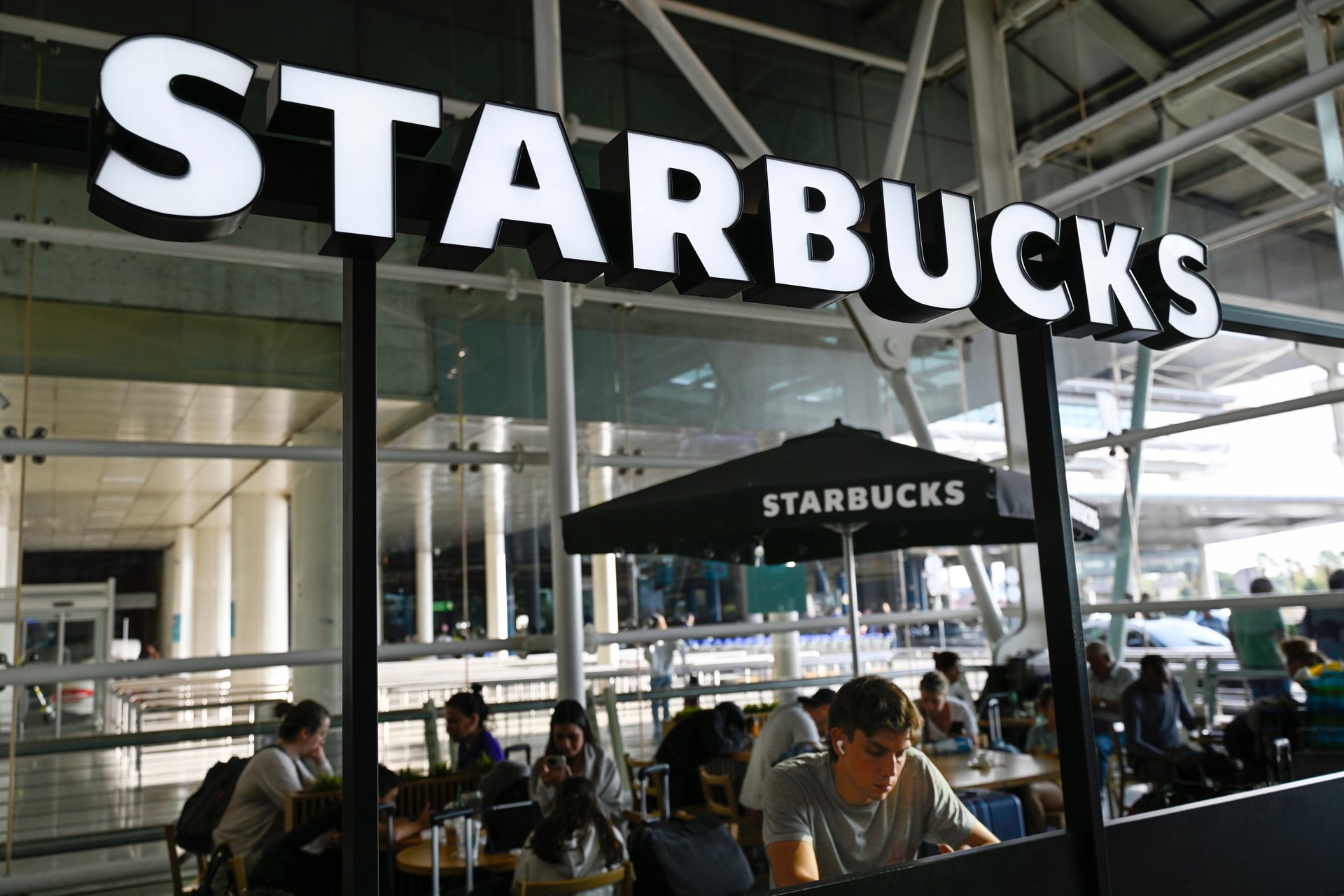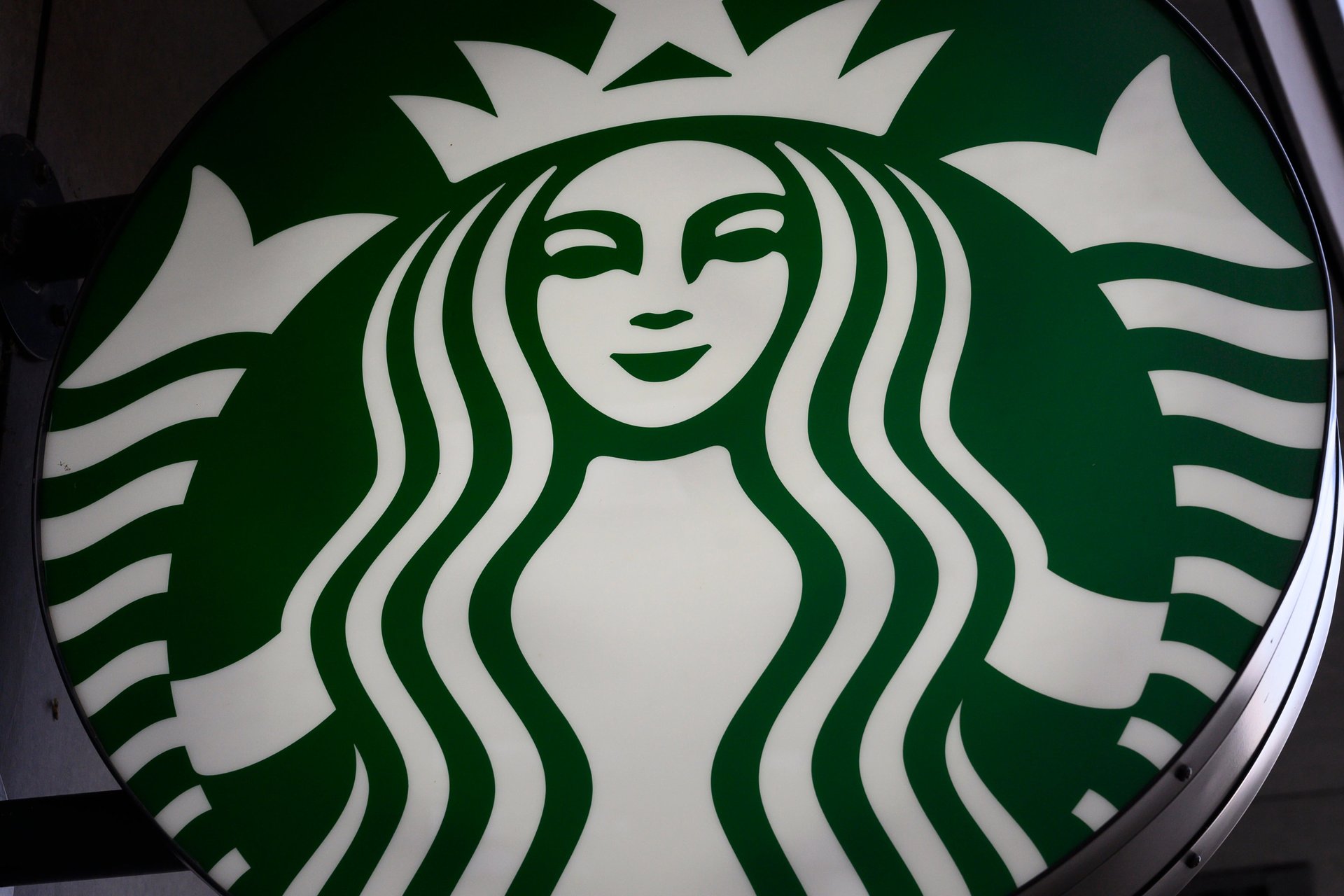Starbucks and Home Depot show consumers are pushed to the limit, strategist says
Carol Schleif of BMO Family Office breaks down what investors can learn about consumer spending from Starbucks' CEO shakeup and Home Depot's sales concerns

Carol Schleif, Chief Investment Officer of BMO Family Office, spoke with Quartz for the latest installment of our “Smart Investing” video series.
Watch the interview above and check out the transcript below. The transcript of this conversation has been lightly edited for length and clarity.
ANDY MILLS (AM): Home Depot is concerned about consumer spending. How concerned should investors be about consumer spending?
CAROL SCHLEIF (CS): I think it’s something to watch because you’re clearly seeing fraying both between the high-end consumers because one of the things you’ll see from some of the other earnings reports is that those high end consumers aren’t necessarily vacationing here. They’re going overseas because of the stronger dollar. Low-end and middle consumers are really struggling at the margin and they’ve used up a lot of those pandemic savings. And so it’s tough out there for a lot of people. And the retail numbers we’ll get on Thursday are gonna tell us a lot about the durability. And the other thing that’s really notable is that consumers have been telling pollsters that they’re really crabby and mad about the price increases for years and yet they’re still spending.
AM: Starbucks actually just ousted their CEO. Starbucks has had struggling sales. What is your prediction for how consumer spending is gonna affect them?
CS: The interesting thing is not just Starbucks, but the name brands too. A lot of them push price increases as far as they could and the consumers are trying to be a lot more discerning about where they’re spending their money. And I think whether they decide that they can have a high-priced coffee every day or maybe every other day or once a week or they’ll make more at home. And so you’re seeing that, too, in some of the switching to store brands in the grocery store and a lot of things like that where consumers are saying you pushed far enough on that because even while the rate of price increases down, I read something this morning that talked about the overall price. Price levels are still 20% higher than they were pre-pandemic and that’s what everybody’s anchored to.
AM: You mentioned retail sales. What’s your prediction? What are you looking at?

CS: Well, we’re thinking sales will still be healthy. You’ll have to parse through some of them and look at where consumers are spending. I would suspect that trend towards value conscious and towards trying to be really careful about what you do. That’s one of the reasons why you saw some of the warehouse clubs push back on how many people can come in on one pass and because a lot of people are going together to buy in bulk and then splitting it out. So consumers are getting very savvy about what they’re doing. They’re hunting down deals and I don’t expect that’ll change.
AM: Gotcha. So things might be a little tight in retail and consumer spending for a while, so where should investors be looking to invest?
CS: We still expect the economy to continue to grow because even while the unemployment number was higher than people had wanted, it was because more people were coming into the labor force. No one’s really parsed into are they coming back in because they’re feeling pinched and they’re on a fixed income and they’re trying to step back or because they’re lured back in from higher wages. And so as long as consumers are employed and as long as those employment numbers stay pretty steady, we suspect you’ll continue to see reasonable returns. It’ll be worth watching when the retailers report in a big way, especially we’re in the all-important back-to-school season, you are seeing a lot of sales, a lot of deals, a lot of buy one get one and you’re starting to see some sensitivity among the sellers, if you will, that consumers have hit their max.
AM: There have been reports of cooling inflation. What do you think the Fed’s going to do in September?
CS: Our recommendation, if they asked us, would be that they cut at least 50 basis points because you’ve seen futures markets project a higher-
AM: At least 50?
CS: Yeah. But it’s important to remember, too, I think what they’ll do, a piece of what they do is while they’re not sensitive to politics or markets, they will want to be careful about the messaging it sends. Hopefully we learn more from Chairman Powell next week coming out of Jackson Hole. But the important thing is on the way up they raised, I think it was a quarter and then 50 and 75, they raised very chunky on the way up and moved it up dramatically. If inflation and these next few prints come down, they’ve got an ability to be able to bring this down pretty dramatically. And, it’s not necessarily our house view, but we wouldn’t mind necessarily seeing them pull down by 25 or 50 and then another 50 and another 50 because if you assume that the neutral rate is more like 2.5 to 3% and we’re at five to five and a quarter, there’s room in there to bring it down. And the one thing I suspect you’ll see is the minute they start bringing it down you’ll get some business deals that have been sitting on the sideline waiting for a cut in the rates to start happening. You’ll get a revival in the housing market which has basically been locked up because you’ve got 40 or 50% of the loans out there at 3% or less. And people don’t wanna move off of those. But people are feeling compelled like they’d really like to go buy houses and you’ve got generationally a whole bunch that wanna get in. So we suspect if they were to cut more aggressively, ‘cause they’ve been very high for a very long period of time now and the data are starting to be really supportive of their goal of trying to achieve a soft landing, hopefully has been reached.
